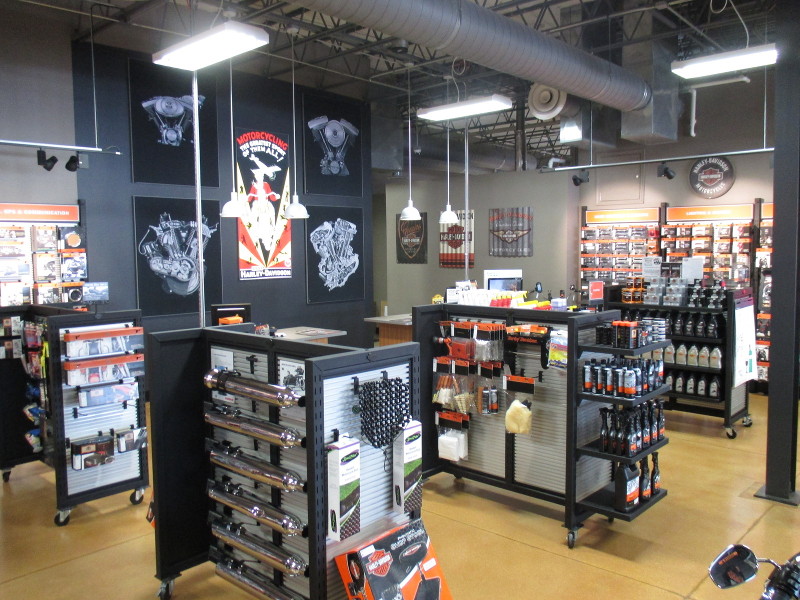Understanding the Important Parts of a Bike: A Comprehensive Overview for Enthusiasts
For motorcycle enthusiasts wanting to raise their riding experience and guarantee their bikes run efficiently, comprehending the essential elements of a motorbike is extremely important. Each aspect, from the engine's complex workings to the essential role of the stopping devices, not only impacts performance yet also safety and security and comfort. This overview will certainly walk via the essential components that every cyclist need to know with, allowing educated choices in both upkeep and prospective upgrades. As we start this expedition, one must ask: just how does each element interact to develop the seamless trip every fanatic seeks?
Engine Elements

The camshaft plays an essential duty in controlling the timing of the engine's valves, making sure the accurate opening and closing necessary for effective fuel and air intake, in addition to exhaust expulsion. This timing is essential to preserving optimal engine efficiency and efficiency. In addition, the carburetor or gas shot system, depending on the bike version, is in charge of blending air with fuel in the proper ratio for burning.
The cooling system, either air or liquid-based, works to maintain the engine's temperature within functional limitations, protecting against getting too hot and making sure long life - motorcycle parts nz. Each element, diligently made and incorporated, adds to the smooth procedure of the engine, specifying the motorcycle's power result and general performance
Transmission System
Integral to the motorbike's performance, the transmission system guarantees reliable power transfer from the engine to the wheels. This system makes up several essential elements, consisting of the clutch, transmission, and last drive, each playing a vital role in equating the engine's power right into movement. The clutch, generally run by a hand lever, offers to disengage the engine and engage from the transmission, permitting for smooth equipment adjustments and regulated acceleration.
The transmission, frequently described as the transmission correct, consists of a set of gears that bikers can by hand change via to readjust the bike's rate and torque output. These equipments are organized in a sequence that enables the bike to increase efficiently and keep optimum engine performance throughout different rates. A lot of bikes make use of a consecutive transmission, requiring the motorcyclist to change gears in an established order.
Braking Systems
While comprehending the transmission system is crucial to taking advantage of a bike's power, just as crucial is the capability to manage and stop that power efficiently, which is where braking systems come into play. Brakes are essential for safety and performance, giving the motorcyclist with the needed control to browse various terrains and problems. Normally, bikes feature two kinds of stopping systems: disc brakes and drum brakes.
Disc brakes are a lot more common in modern motorcycles because of their superior performance. They contain a brake disc, caliper, and pads. When activated, the caliper squeezes the brake pads against the rotating disc, transforming kinetic power into heat, thus slowing down the wheel. This system offers far better warmth dissipation, consistent performance, and enhanced stopping power, specifically in wet conditions.
On the other hand, drum brakes, though less common, are still discovered in some motorbikes. They work by pressing brake shoes versus the inner surface of a drum affixed to the wheel. While usually much less reliable in warm dissipation and stopping power, drum brakes are simpler and much more affordable.
Understanding these braking systems' subtleties permits riders to keep their motorcycles appropriately and value the design that makes certain safe and effective stopping.
Suspension and Guiding
Suspension and steering systems are vital elements that substantially influence a bike's handling and experience convenience. The suspension system, consisting article source of forks at the front and shock absorbers at the back, absorbs roadway irregularities, enhancing stability and control. Front forks, upside down or generally telescopic, compress and rebound to reduce impacts, while rear shock absorbers keep tire contact with the roadway, important for grip and safety and security.
Steering, focused around the handlebars, connects the cyclist to the bike's directional control. The guiding head bearings ensure smooth procedure, permitting specific maneuverability. Appropriate placement and upkeep of these bearings are critical for predictable guiding action and decreasing rider tiredness.
The suspension's adjustability is an additional crucial element; preload, damping, and rebound setups permit personalization to match various riding designs and problems. This adaptability is necessary for enhancing efficiency, whether navigating metropolitan roads or taking on sturdy tracks. Advancements like digital suspension systems use real-time adjustments, boosting trip quality throughout diverse terrains.

Electric Equipments
After making sure a regulated and smooth ride via efficient suspension and guiding systems, interest turns to the electrical systems, a pivotal facet of modern-day bikes. These systems play an important function not only in beginning the engine but likewise in powering various parts that improve the capability and safety of the motorbike.
At the heart of a bike's electric system is the battery, which shops electric power required for starting the engine and powering supporting systems - mx parts nz. The alternator or generator, combined with the rectifier-regulator, ensures the battery continues to be charged while the motorbike functions, converting mechanical power right into electrical energy and maintaining voltage degrees
The ignition system, another vital element, is in charge of igniting the air-fuel mixture in the engine's cylinders. Modern motorbikes typically utilize a digital ignition system, offering greater performance and integrity contrasted to traditional systems.
Illumination systems, consisting of fronts lights, tail lights, and indications, are additionally vital, making certain visibility and safety and security for the motorcyclist. Extra digital elements such as sensors, control devices, and shows add to sophisticated features like Your Domain Name gas injection administration, anti-lock stopping systems (ABS), and digital dashboards, further improving the riding experience.
Conclusion
A detailed understanding of a motorcycle's crucial components, including the engine, transmission system, braking systems, suspension, steering, and electric systems, is important for lovers intending to enhance safety, performance, and comfort. Proficiency of these aspects permits educated decisions relating to maintenance and upgrades, inevitably enhancing the riding experience. By integrating this expertise, motorcyclists can guarantee their motorbikes run at peak effectiveness and integrity, therefore maximizing both satisfaction and long life of their vehicles.
For bike fanatics looking to boost their riding experience and guarantee their bikes run smoothly, understanding the vital parts of a bike is vital.Important to the motorcycle's capability, the transmission system makes sure efficient power transfer from the engine to the wheels.While recognizing the transmission system is vital to harnessing a motorcycle's power, similarly crucial is the ability to control and stop that power efficiently, which is where stopping systems come right into play. Generally, motorbikes include two kinds of stopping systems: disc brakes and drum brakes.
A thorough comprehension of a bike's crucial elements, including the engine, transmission system, braking mechanisms, a fantastic read suspension, steering, and electrical systems, is indispensable for enthusiasts aiming to enhance convenience, safety and security, and efficiency.